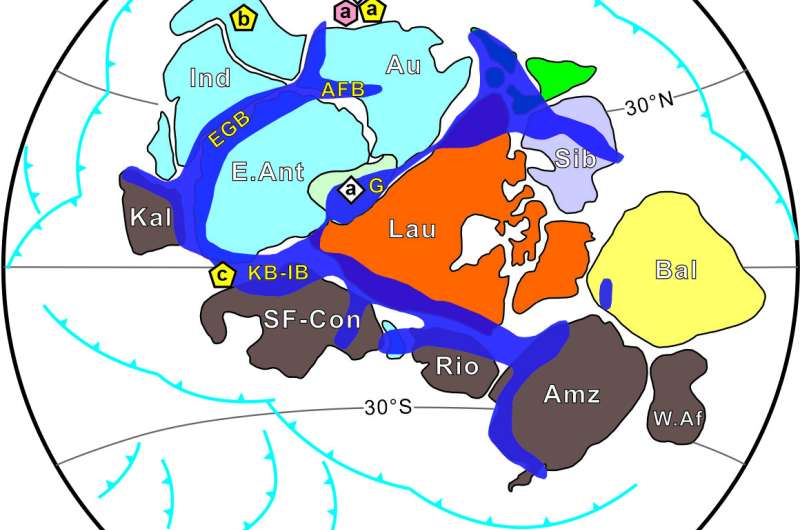This article has been reviewed according to Science X's editorial process and policies. Editors have highlighted the following attributes while ensuring the content's credibility:
fact-checked
trusted source
proofread
Pre-Cryogenian stratigraphy, paleontology, and paleogeography of the Tibetan Plateau and environs

Based on existing data, the records of pre-Cryogenian sedimentation and paleontology are mainly concentrated in the Meso-Neoproterozoic, with relatively few records from the Paleoproterozoic or earlier. The oldest geological record is the Hadean detrital zircons in the metamorphosed sedimentary rocks of the Himalaya and Qamdo areas (ca. 4.0 Ga).
The Tibetan Plateau and surrounding areas preserve records related to the formation and evolution of the Kenor supercraton, and the Columbia, Rodinia, and Gondwana supercontinents. Pre-Cryogenian basements can be divided into three types: Tarim-, Yangtze-, and Lhasa-type.
The Tarim-type basement includes the southern Tarim terrane and the northern edge of the Indian continent, which are characterized by (1) magmatic-metamorphic records of the Columbian assembly and detrital zircon age peaks at ca. 2.0-1.8 Ga; (2) the absence of magmatic-metamorphic records and detrital zircon age peaks related to the Rodinia assembly (ca. 1.3-0.9 Ga); and, (3) the development of Cryogenian diamictite, prior to which no large-scale volcanic activity has been observed.
The Yangtze-type basement terranes include the western Yangtze terrane and the western Qinling-Qilian-Kunlun terrane, which are characterized by (1) widespread development of Cryogenian diamictite, beneath which large-scale volcanic activity related to the global climate cooling can be observed; (2) magmatic-metamorphic records related to Rodinia assembly (ca. 1.1-1.0 Ga) and arc-related magmatism during ca. 1000-750 Ma; and, (3) abundant Meso-Neoproterozoic stromatolite and micropaleoflora fossils.
The Lhasa terrane is located at the core of the Tibetan Plateau and has distinct differences in its pre-Cryogenian basement compared to other terranes in the plateau and adjacent areas. These differences are mainly reflected in (1) the development of early Neoproterozoic continental rift sedimentary records (ca. 900 Ma); and (2) the presence of a strong 1.2-1.1 Ga detrital zircon age peak in Precambrian to Paleozoic sedimentary strata, accompanied by contemporaneous magmatic-metamorphic records.
In a study published in the journal Science China Earth Sciences and led by Dr. Pei-yuan Hu and Qing-guo Zhai (Institute of Geology, Chinese Academy of Geological Sciences), the characteristics of pre-Cryogenian sedimentation, paleontology, magmatism, and metamorphism in the Tibetan Plateau and its surrounding areas were systematically summarized.
The above-mentioned results suggest that the pre-Cryogenian material in the Tibetan Plateau and its surrounding areas have played an important role in studying the formation and evolution of early supercontinents on Earth.
Integrating previous studies with this contribution, the Tarim- and Yangtze-type basement terranes are interpreted as having a paleogeographic affinity with the northern margins of the Australian and Indian continents, and the Lhasa-type basement possibly came from the African continent.
More information: Peiyuan Hu et al, Pre-Cryogenian stratigraphy, palaeontology, and paleogeography of the Tibetan Plateau and environs, Science China Earth Sciences (2023). DOI: 10.1007/s11430-022-1127-8
Provided by Science China Press


















